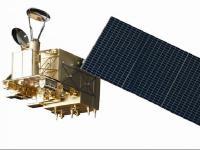The FY-3 series of CMA/NSMC (China Meteorological Administration/National Satellite Meteorological Center) represents the second generation of Chinese polar-orbiting meteorological satellites (follow-on of FY-1 series). The FY-3 series represents a cooperative program between CMA and CNSA (China National Space Administration); it was initially approved in 1998 and entered full-scale development in 1999. Key aspects of the FY-3 satellite series include collecting atmospheric data for intermediate- and long-term weather forecasting and global climate research.
The FY-3 series satellites monitor large-scale meteorological disasters, weather-induced secondary natural hazards and environment changes, and provides geophysical parameters for scientific research in climate change and its variability, climate diagnosis, and predictions. The FY-3 series renders global and regional meteorological information for aviation, ocean navigation, agriculture, forestry, marine activities, hydrology, and many other economic sectors.
Instruments:
VIRR (Visible and Infrared Radiometer)
IRAS (Infrared Atmospheric Sounder)
MWTS (Microwave Temperature Sounder)
MWHS (Microwave Humidity Sounder)
MERSI (Medium Resolution Spectral Imager)
SBUS (Solar Backscattering UV Sounder)
TOU (Total Ozone Unit)
MWRI (Microwave Radiation Imager)
ASI (Atmospheric Sounding Interferometer)
ERM (Earth Radiation Measurement)
SEM (Space Environment Monitor)
SIM (Solar Irradiation Monitor)
